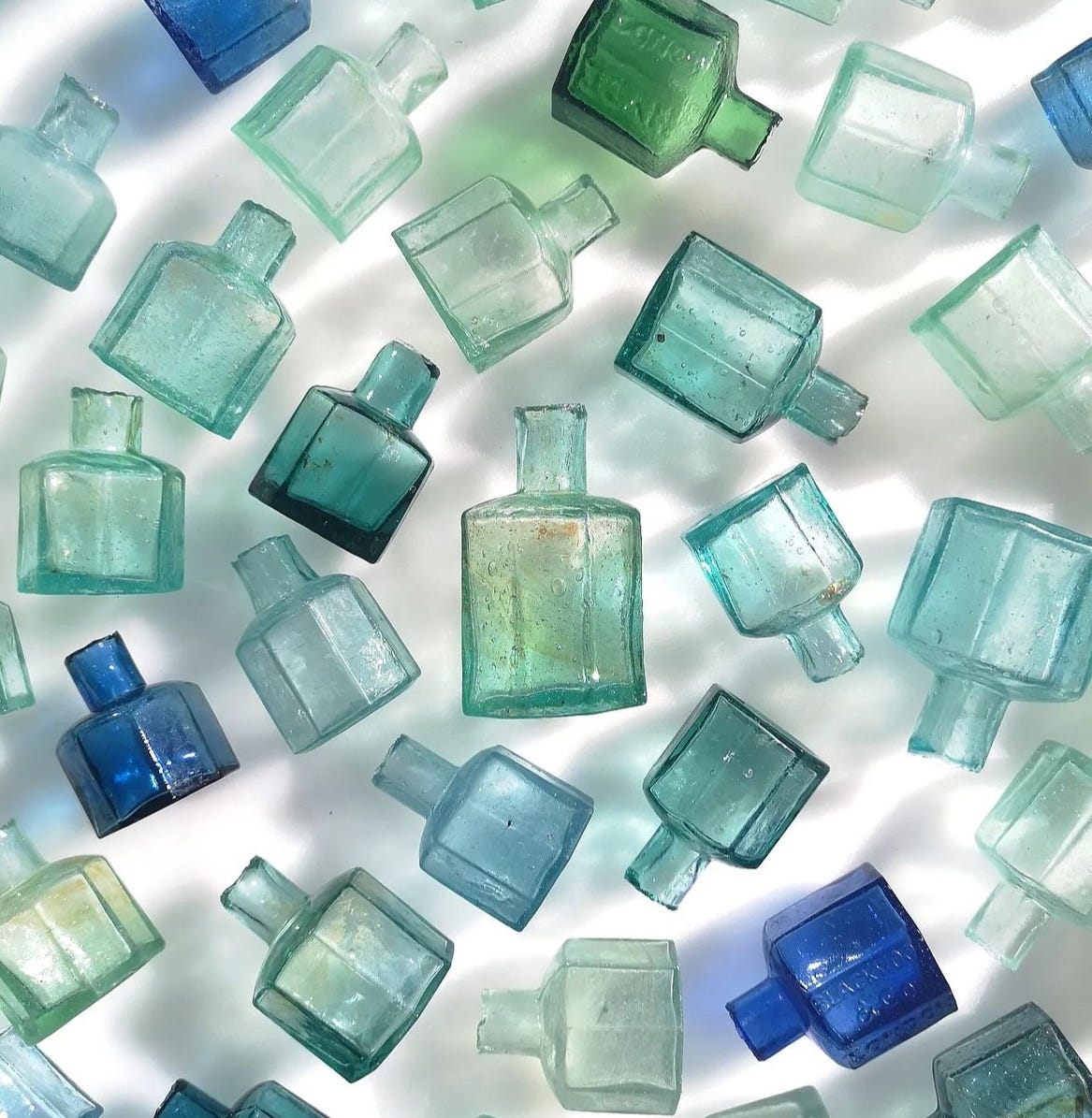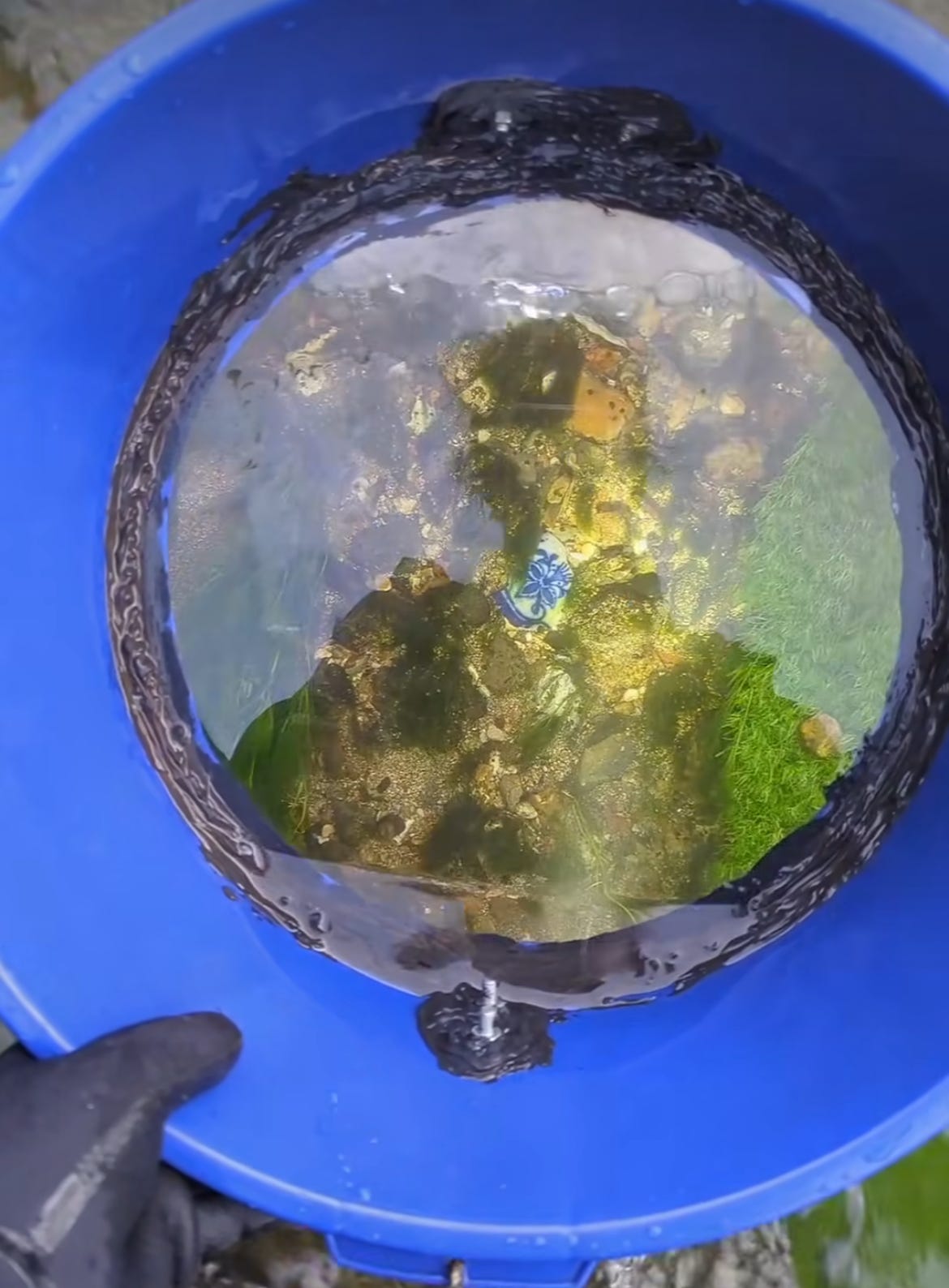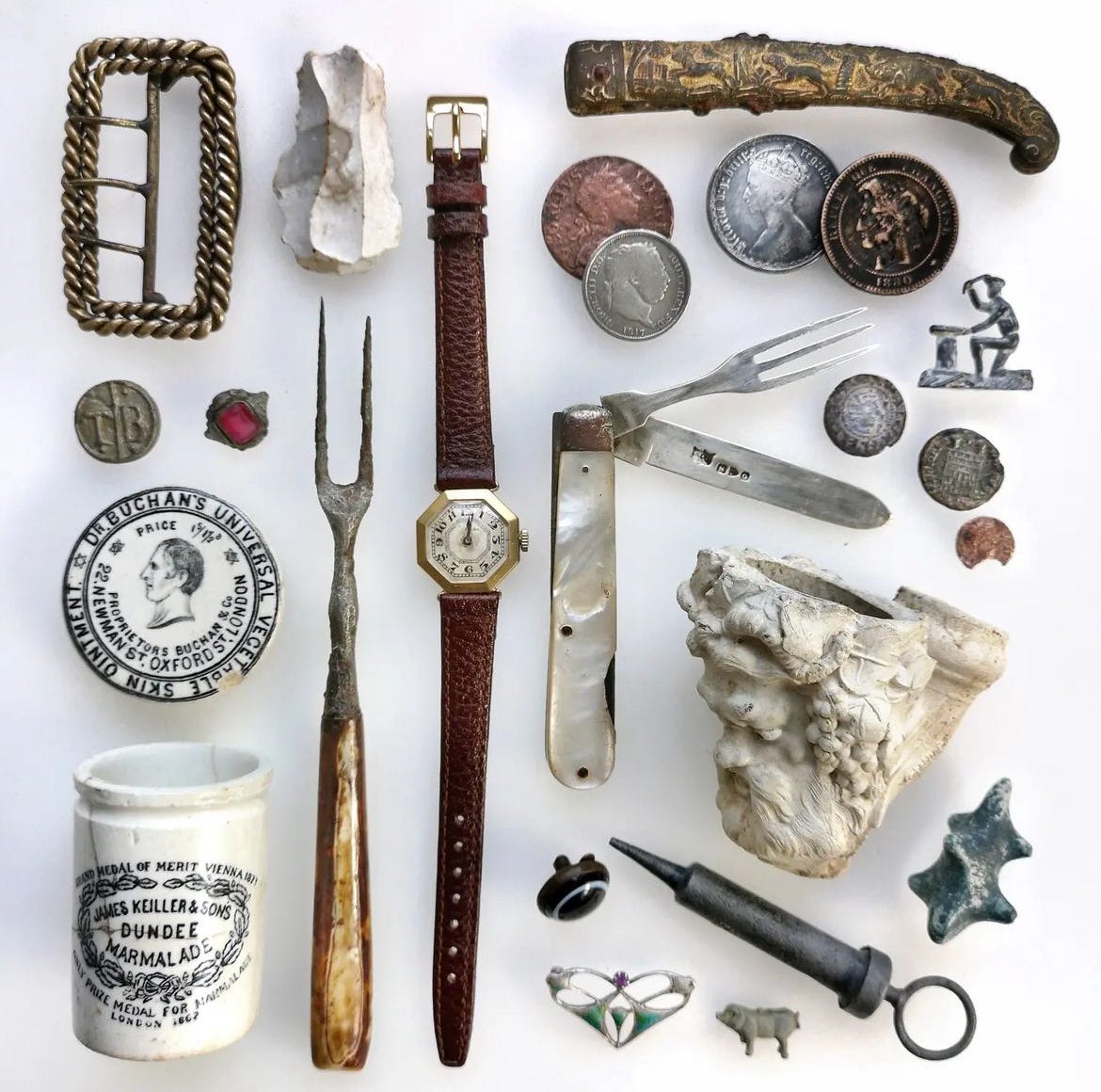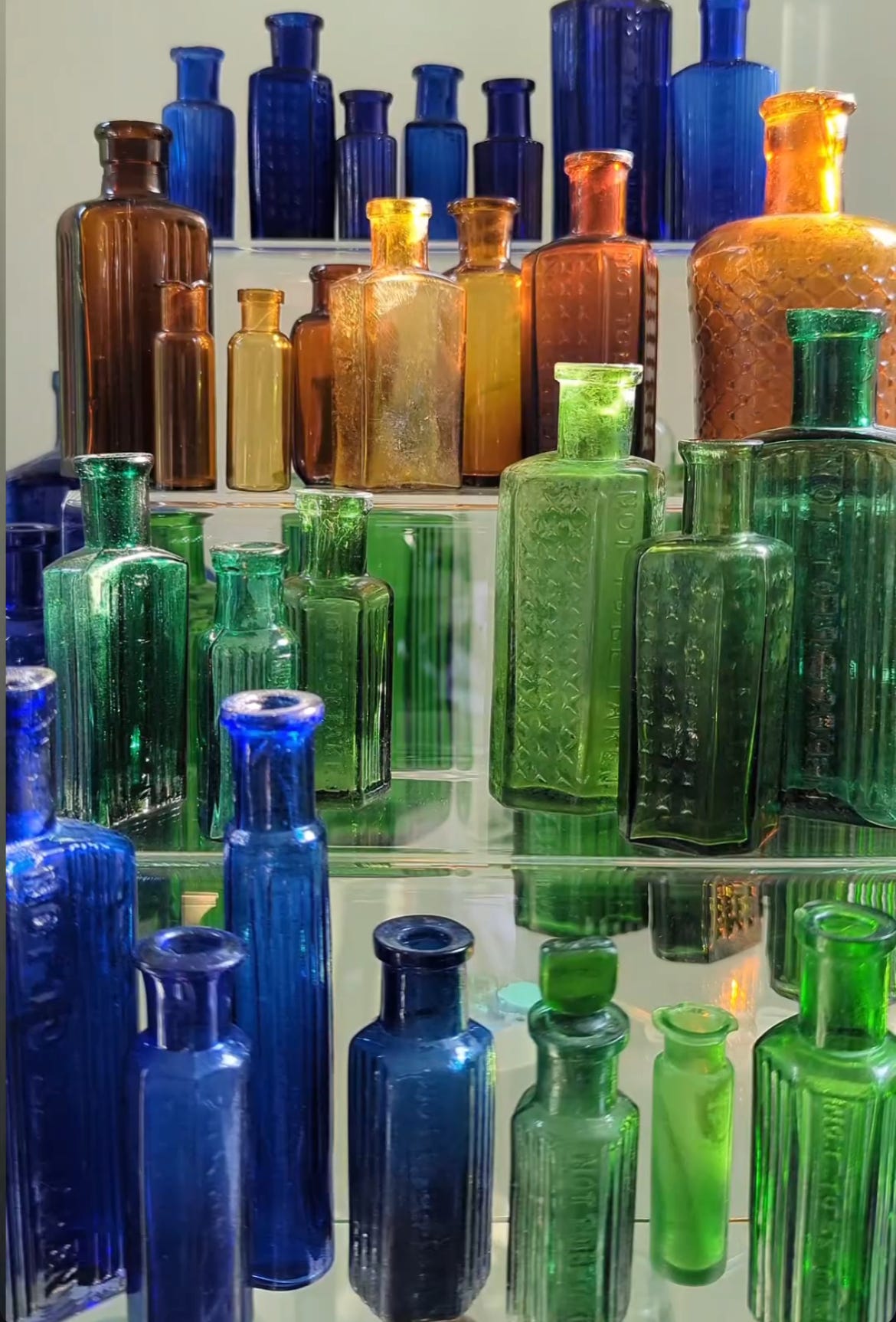A week ago, in the turbid predawn, I surfaced from the murk of a restless sleep. Against my better judgement, I grabbed my phone and read the news by its strange, aquarium light. I wasn’t exactly surprised, but a leaden dread settled in my bones. It pinned me where I lay. I couldn’t keep pace with the roiling outrage and the roar of blame as I scrolled through my frothing news feed.
I flicked through panicked newscasters and black squares and people already bickering over their allotted time to grieve or organize or fight. Then, I was submerged in an unexpected peace. Through some algorithmic quirk, I found myself on the gravelly bottom of an English river with the glint of lost rings and the quiet blue of forgotten bottles.

Please don’t take it as a cry for help when I tell you: I’ve always wanted this. As a kid, I escaped the bright, sticky chaos of a summer pool day by exhaling all of my air and sinking to the depths. I lay there, feeling the cat’s tongue of the old pool’s concrete bottom against my calves and shoulder blades. I watched the slow ballet of an inverted world pirouette above. Sound surrendered its sharp edges and — absent the perpetual metronome of my breath — the quiet settled over me like silt. I held out as long as I could against my burning lungs until animal urgency propelled me back into the white-hot din of the August world.
So when, in a moment of collective extremis, an Instagram reel thrust me beneath the current of a Southern English chalk stream, it felt like a blessing. More precisely, it dropped me into the makeshift bathyscope of My Ordinary Treasure, the account of Jane Eastman, a silversmith who spends her spare time combing the streambeds near her Hampshire home. A dish bucket with a piece of plexiglass epoxied into the bottom lets her peer beneath the stream’s churning surface and back through time.
Equipped with waders and various long-handled rakes and sieves, Eastman gently coaxes forgotten relics of the everyday from their watery beds: the knuckle of a clay pipe’s bowl blending in with the river rocks, crocks with labels glazed in elaborate cursive, rings lost or banished to the water in heartbreak. Marbles like fantastic miniature planets. Ink pots emptied of their stories and letters and ledger keeping, scrubbed clean by sand and time. Rusted keys with labyrinth teeth, lonely for forgotten doors. A wristwatch forever marking the hour it sunk beneath the current. Even an old military sword, blunted by lime scale and time. Buttons, beads, brooches. And bottles. So many bottles.
Eastman’s videos often end with her placing her newest bottle find in among the vitreous library she’s collected over the years: a translucent rainbow of ambers and aquas and cobalt and mossy greens. Her collection undoes my understanding of rivers; over a hundred years of storms and rushing currents and fallen tree branches plow through a narrow channel that somehow still cradles unbroken bottles in its gentle pockets.
An undisturbed bottle is an incidental time capsule. A small, rectangular bottle the color of a desert sky at dusk once held a sample of Soir de Paris perfume. Clean off the scale and manage to twist it open — and the irises of a single spring over a century past spring to life. An enormous, hand-blown chemist’s bottle with a broken, narrow neck sends a stream of bubbles toward the surface as Eastman moves it: air trapped from its last day in a dry world, breath from people no longer living. A commenter likens it to a genie. I come to it with so many wishes, but it only burbles back perspective.
The most eye-catching are the poison bottles. Before the mid-19th century, accidental poisonings were a relatively common occurrence. Everything was kept in glass bottles, often reused, and arsenic could live alongside absinthe and carbolic acid could be mistaken for cough syrup. It was an easy, and tragic, mistake to make in the perpetual dim of a Victorian pantry – particularly by the very young and very old. The Poisons and Pharmacy Act of 1908 in Britain mandated the use of specific bottles, easily recognized by sight and touch, for poisonous substances.
This regulation not only initially saved lives but led to a psychedelic wonderland of bottles. Bright bottles of all shapes and sizes were studded with x’s and hobnail bumps, ridged with vertical grooves, shaped like coffins with a flat side for the label, embossed with rats for one brand of rat poison. Most have the phrase NOT TO BE TAKEN in raised letters. These bottles were phased out after World War II, when child-proof closures were developed instead; turns out the bright colors and interesting textures actually attracted children to the dangers held within. We are too easily drawn to the things that might kill us.
That morning when I woke in the wee hours, I combed the creek beds with Eastman for hours until the pallid morning sun backlit a scrim of clouds. Maybe I wanted to hide from the tumult beneath a blanket of water like I had as an August child. It was, undoubtedly, an escape. I won’t deny that for a second. But I do believe there’s a hidden wisdom in the things that bring us unexpected comfort.
Maybe I just wished for a bathyscope’s clarity in our opaque historical moment. Maybe the detritus of the everyday, the relics of the forgotten people who endured famines and pandemics and war felt like a solace. Here were a thousand stories of people long since gone to soil that the river kept like a curious child, like an archivist for no one in particular. Whose hands will hold the things we touch and wonder about us, about this moment, in the future we cannot yet know? Maybe I just wanted to return from the peace of the creek with an arcane remedy for what ails us, or at least something glinting beneath the surface that could look like hope.
At the stream bottom, time is a different thing altogether. The all-devouring crisis of the present is tumbled smooth by the indifferent hand of continuity. We’re all casting our old bottles and keys into the current, thinking it’s the end of something when it’s always the beginning of something else—something slow and inevitable. I want to hold it in my hand, feel its contours, know if it’s medicine or poison.
You can find out more about Jane Eastman on Instagram and TikTok. She’s also written a fantastic article about poison bottles for Beach Comber Magazine and has a feature about her in Express.






Beautifully written!
I'm ready to join a bottle expedition.